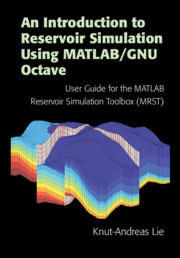 An Introduction to Reservoir Simulation Using MATLAB/GNU Octave
An Introduction to Reservoir Simulation Using MATLAB/GNU Octave from Part IV - Reservoir Engineering Workflows
Published online by Cambridge University Press: 22 July 2019
One of the most challenging tasks in reservoir engineering is to homogenize data from a fine to a coarser model in a systematic and robust manner. This chapter reviews a variety of such upscaling methods. Simple averaging is sufficient for additive properties but only correct in special cases for nonadditive properties like permeability. The correct effective permeability depends on the applied flow field. In flow-based upscaling, one solves local flow problems with various types of boundary conditions to determine effective permeabilities or transmissibilities. We outline the most common methods, and discuss methods that reduce the influence of the prescribed boundary conditions by computing flow solutions on larger domains. Computations are achieved by imposing boundary conditions derived from a global flow solution. A number of cases compare the accuracy of different upscaling methods, and we discuss how flow diagnostics can be used for quality control. The last example summarizes major parts of the book by going all the way from geological horizons via flow simulation to upscaled models with flow diagnostics quality control.
To save this book to your Kindle, first ensure [email protected] is added to your Approved Personal Document E-mail List under your Personal Document Settings on the Manage Your Content and Devices page of your Amazon account. Then enter the ‘name’ part of your Kindle email address below. Find out more about saving to your Kindle.
Note you can select to save to either the @free.kindle.com or @kindle.com variations. ‘@free.kindle.com’ emails are free but can only be saved to your device when it is connected to wi-fi. ‘@kindle.com’ emails can be delivered even when you are not connected to wi-fi, but note that service fees apply.
Find out more about the Kindle Personal Document Service.
To save content items to your account, please confirm that you agree to abide by our usage policies. If this is the first time you use this feature, you will be asked to authorise Cambridge Core to connect with your account. Find out more about saving content to Dropbox.
To save content items to your account, please confirm that you agree to abide by our usage policies. If this is the first time you use this feature, you will be asked to authorise Cambridge Core to connect with your account. Find out more about saving content to Google Drive.